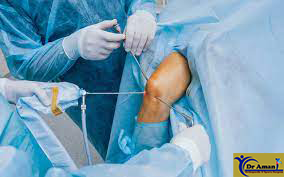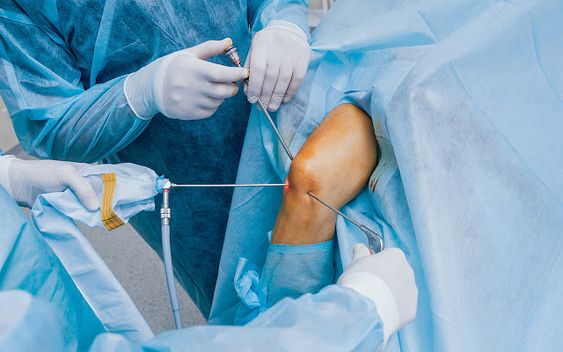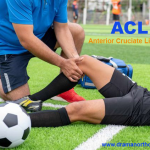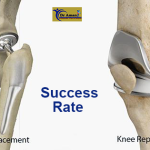Knee Arthroscopy A Comprehensive Guidelines FAQs
Introduction
Knee pain and discomfort can greatly affect one’s quality of life, limiting mobility and causing discomfort. In such cases, knee arthroscopy emerges as an effective solution. This advanced surgical procedure allows for a precise diagnosis and treatment of various knee-related issues. In this comprehensive guide, we will explore knee arthroscopy, covering everything from the procedure itself to the recovery process and expected outcomes. We have drawn insights from various sources, combining the expertise of three competitor articles to provide a deeper understanding of knee arthroscopy.

Understanding Knee Arthroscopy
Arthroscopy is a minimally invasive surgical technique that leverages a tiny camera, known as an arthroscope, to gain access to the interior of the knee joint. It provides a detailed view of the knee’s structure and enables the surgeon to use miniature surgical instruments through small incisions. This approach offers numerous advantages over traditional open surgery, including reduced pain, less joint stiffness, and faster recovery.
Types of Anesthesia for Knee Arthroscopy
The success of Arthroscopy largely depends on the choice of anesthesia. Patients can opt for local anesthesia, spinal anesthesia, or general anesthesia, depending on their preferences and the surgical complexity. Regional nerve blocks can also be used to complement general anesthesia and reduce the need for higher levels of general anesthesia, contributing to a smoother surgical experience.
Common Reasons for Knee Arthroscopy
Arthroscopy is recommended for various knee problems. From addressing torn meniscus and damaged ligaments to tackling inflamed synovium and misaligned kneecaps, this versatile procedure offers solutions to an array of issues. It can even address complications such as Baker cysts and bone fractures in the knee. Understanding these common reasons can help patients identify when knee arthroscopy might be necessary.
Risks and Complications
Like any medical procedure, knee arthroscopy carries certain risks. While complications are generally rare and manageable, they include allergic reactions, bleeding, infection, injury to blood vessels or nerves, and knee stiffness. A comprehensive overview of the potential risks will help patients make informed decisions.
Preparing for Knee Arthroscopy

Proper preoperative preparation is crucial for a successful knee arthroscopy procedure. Patients need to make necessary adjustments to their medication regimen, consider their lifestyle choices, report any illnesses, and adhere to fasting guidelines. These preparations ensure a smoother surgical experience and reduce potential complications.
Medication Adjustments
Prior to surgery, it’s essential to discuss medications with your healthcare provider. Adjustments might be needed to manage blood-thinning drugs, non-prescription pain relievers, and other relevant medications.
Lifestyle Considerations
Lifestyle choices, such as alcohol consumption and smoking, can impact the healing process. Smoking, in particular, can slow down wound and bone healing, making it crucial to seek support for quitting before surgery.
Illness Reporting
Any illnesses, such as colds, flu, fever, or herpes breakouts, should be reported to the healthcare provider before surgery to assess potential complications.
Fasting Guidelines
Patients are typically asked to refrain from eating or drinking for a specific period before the procedure to ensure a safe and effective surgery.
The Knee Arthroscopy Procedure
A detailed examination of the knee arthroscopy procedure itself provides valuable insights into how this advanced technique works. This section will break down the steps involved, from creating small incisions to the use of saline and surgical tools. It will also explore the surgical correction process and how the procedure concludes and is monitored.
Small Incisions and Saline
The surgeon creates 2 or 3 small incisions around the knee to insert the arthroscope and other surgical tools. Saline is then used to inflate the knee, improving visibility within the joint.
Camera and Surgical Tools
A tiny camera attached to the arthroscope is inserted, providing a clear view on a video monitor. This guides the surgeon in identifying and addressing issues within the knee. Various surgical instruments are used for tasks such as shaving, cutting, grasping, and meniscal repair.
Surgical Correction
Depending on the issue, the surgeon may repair, remove, or reconstruct specific structures in the knee. Specialized devices might be used to anchor stitches into bone, ensuring long-term stability.
Closure and Monitoring
After the procedure, saline is drained from the knee, and the incisions are closed with sutures or adhesive strips. These incisions are covered with a dressing. It’s common for surgeons to capture images during the surgery for later review.
Postoperative Care and Recovery
Effective postoperative care is essential for a smooth recovery. Pain management strategies are crucial, and patients will likely leave the surgical facility with an ace bandage over their knee dressing. Exercise and physical therapy are also key components of the recovery process.
Pain Management
After knee arthroscopy, some level of pain is to be expected. Various medications can be prescribed to manage pain, including opioids, non-steroidal anti-inflammatory drugs (NSAIDs), and local anesthetics. Opioids, however, should be used with caution, given their potential for addiction.
Ace Bandage and Discharge
Most patients can return home on the same day as their surgery, wearing an ace bandage over their dressing. Having someone available to assist and monitor the patient on the day of the surgery is essential.
Exercise and Physical Therapy
To restore knee mobility and strength, exercise is crucial for several weeks post-surgery. Some patients may benefit from formal physical therapy programs, which can significantly improve the final result.
Expected Outcomes and Recovery Time
The success and recovery timeline of knee arthroscopy depend on the specific problem addressed during the surgery. Simple procedures often lead to fast recovery, allowing patients to return to most activities within 6 to 8 weeks. However, patients who’ve had more complex procedures might require crutches or a knee brace for an extended period. Full recovery can take several months to a year, particularly in cases of arthritis coexisting with the knee issue.
Simple vs. Complex Procedures
Understanding the differences between simple and complex procedures is vital for managing expectations. The nature of the issue treated plays a significant role in the recovery timeline.
Managing Arthritis
Patients with arthritis should be aware that while knee arthroscopy can address other knee damage, it may not fully alleviate arthritis symptoms.
Frequently Asked Questions (FAQs)
Q1: What is knee arthroscopy?
Knee arthroscopy is a minimally invasive surgical procedure that uses a tiny camera to diagnose and treat various knee problems. Small incisions are made to insert the camera and surgical tools
Q2:Why is knee arthroscopy performed?
Knee arthroscopy is performed to diagnose and treat various knee conditions, such as torn meniscus, damaged cartilage, loose fragments, and other issues that cause pain, swelling, and limited mobility in the knee.
Q3:What are the benefits of knee arthroscopy?
The benefits of knee arthroscopy include smaller incisions, less pain, quicker recovery, and reduced scarring compared to open surgery. It can also be used for both diagnosis and treatment during the same procedure.
Q4:How is knee arthroscopy performed?
During knee arthroscopy, the surgeon makes small incisions in the knee and inserts the arthroscope to visualize the joint. Specialized instruments are used to perform any necessary repairs or procedures. The procedure is typically done under general or regional anesthesia.
Q5:Is knee arthroscopy a major surgery?
Knee arthroscopy is considered a minimally invasive procedure, which means it is less invasive than open knee surgery. However, it is still a surgical procedure and should be taken seriously.
Q6:What conditions can be treated with knee arthroscopy?
Knee arthroscopy can be used to treat a range of conditions, including meniscus tears, ligament injuries (e.g., ACL or PCL tears), cartilage damage, removal of loose bone or cartilage fragments, and synovial cysts.
Q7:How long does it take to recover from knee arthroscopy?
Recovery time varies depending on the specific procedure performed, but many patients can return to light activities within a few days and full activity within a few weeks to several months. Physical therapy is often recommended to aid in recovery.
Q8:What are the potential risks and complications of knee arthroscopy?
Although knee arthroscopy is generally safe, potential risks and complications include infection, blood clots, injury to nerves or blood vessels, and persistent pain or stiffness. Your surgeon will discuss these risks with you before the procedure.
Q9:Can knee arthroscopy be done as an outpatient procedure?
Yes, knee arthroscopy is often performed on an outpatient basis, which means you can usually go home the same day as the procedure. However, you will need someone to drive you home.
Q10:Who is a good candidate for knee arthroscopy?
A good candidate for knee arthroscopy is someone with knee pain, swelling, or limited mobility caused by a condition that can be diagnosed or treated using this minimally invasive procedure. Your orthopedic surgeon will evaluate your specific case to determine if it’s appropriate for you.
Remember that the information provided here is for general guidance, and it’s essential to consult with a Orthopedic & sports surgeon for personalized advice and information specific to your situation.






2 Comments
Akmam Hussain
November 18, 2023Thank you sir g Alhamdulellah now i am relax after surgery
shah Nawaz Sherazi
February 15, 2024that great…Please put your review on our google profile